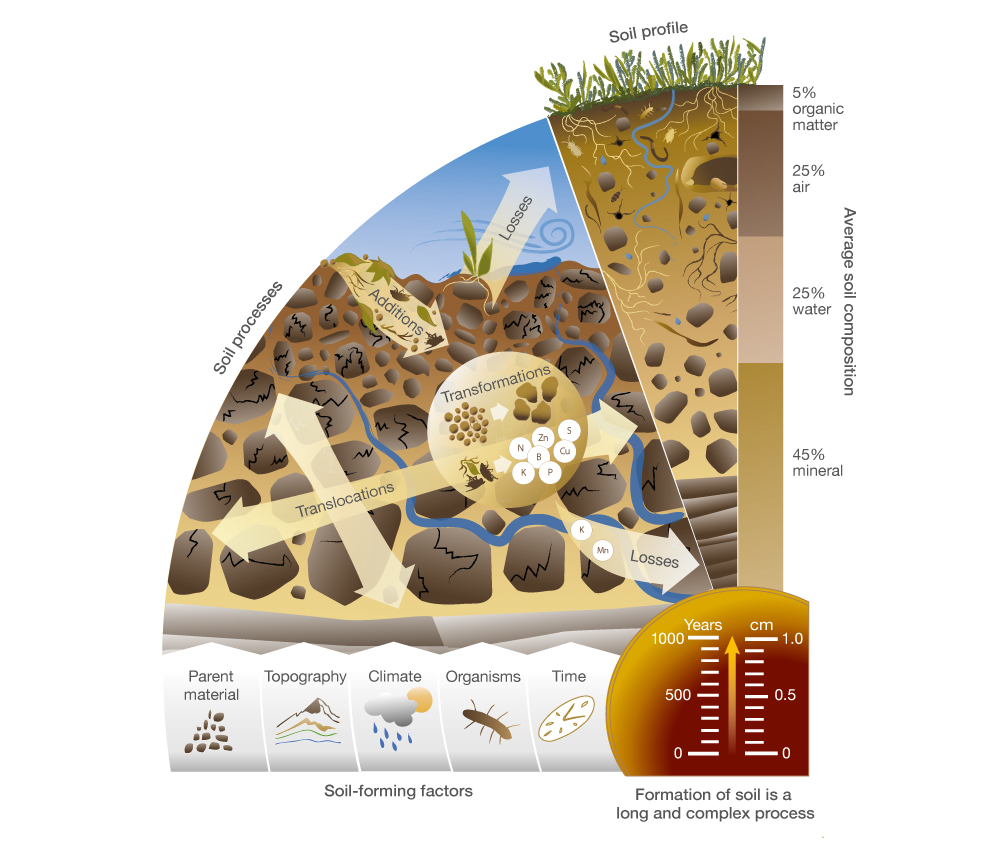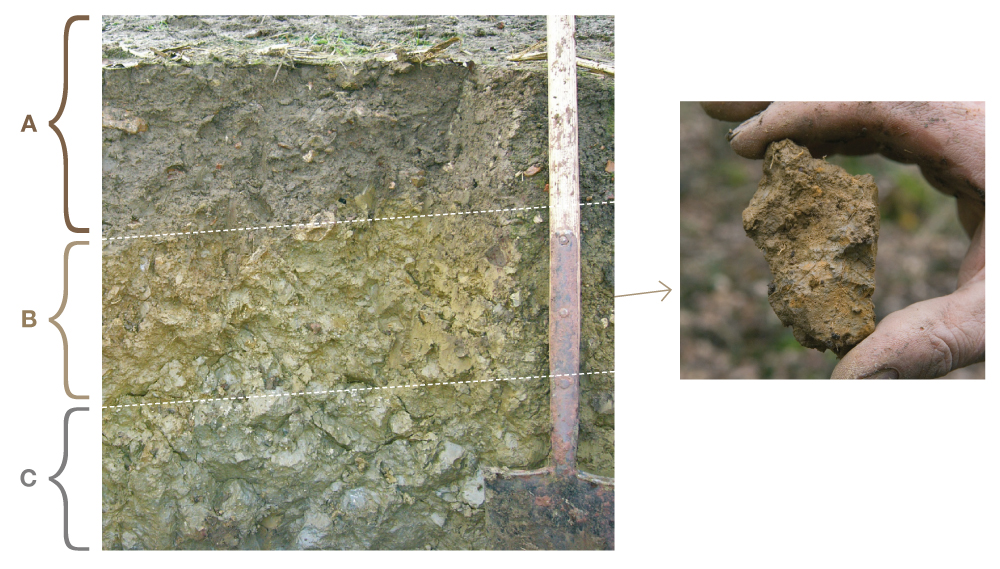- Home
- Knowledge library
- Geology and soil formation
Geology and soil formation
Underlying geology determines the soil parent material and its properties, including soil depth, stoniness, mineralogy, and texture. Soil maps, therefore, often closely resemble geological maps.
Back to: Soil classification (type)
The formation of soil
Soils form over thousands of years through local interactions of climate, geology, hydrology, and management.
Physical and chemical alteration (weathering) break down parent materials (solid rocks and drift deposits). Finally, biological cycles of growth and decay produce the extra critical ingredient: organic matter.
Each field has unique soils.
Parent material
Parent material is the main determinant of whether soils are likely to have a shortage or an abundance of particular nutrients – phosphorus (P), potassium (K) and magnesium (Mg) or trace elements.
For example, some clays release enough potassium to support moderate crop growth without additional fertilisation.
Potassium-releasing clays include:
- Chalky boulder clay
- Gault Clay
- Kimmeridge Clay
- Weald Clay
- Oxford Clay
- Blisworth Clay
Note: Carboniferous clays do not release much potassium.
Figure 1. The formation of soil

Adapted from © FAO 2015 ‘How soil is formed’ www.fao.org/resources/infographics/infographics-details/en/c/284480 (accessed 07 November 2019).
Soil horizons
Soil types are classified in a hierarchy based on observations of soil properties from soil pits (up to 1.5 m deep).
The number and arrangement of the layers that make up the soil (horizons) and their texture and colour are particularly important.
The largest classification units (equivalent to species for plants/animals) are the major groups.
Most agricultural soils, except some upland soils, fall into one of the subgroups of well-drained brown earths.
Iron compounds
Usually, the iron compounds in agricultural soils give the horizons a reddish-brown colour.
However, when deprived of oxygen, such as under waterlogged conditions, the compounds change to a grey or bluish colour in one or more characteristic gleyed layers.
Rusty orange-red mottles can also form, where air enters around roots or on the surface of larger pores.
Figure 2. Soil profile showing characteristic horizons. This is a surface-water gley soil showing gleying as a result of waterlogging. The clay soil is relatively impermeable and, therefore, anaerobic conditions occur during excess rainfall

A – Cultivated topsoil (clay with organic matter)
B – Subsoil (clay, blocky and prismatic structure with mottling characteristic of seasonal waterlogging) – Insert shows medium prism from subsoil (grey but with many rusty mottles as a result of intermittent waterlogging)
C – Soil parent material (grey clay with evidence of waterlogging)
Images © Environment Agency, thinksoils
Soil series
The smallest classification units are the soil series (equivalent to a crop variety or animal breed).
Named after the places where they were first fully described, soils in any given series have a similar texture, depth, and mineralogy.
On many farms, there are usually about three to four soil series, but the number can be far higher than this.
There are about 750 soil series in England and Wales.
National soil maps
National soil maps group soils that often occur together into smaller ‘map units’.
At present, there are about 300 ‘soil associations’ and about 30 ‘soilscapes’ in England and Wales (Scotland and Northern Ireland have a different classification system).
The basic soil types determine many of the inherent soil-related constraints (e.g. waterlogging and erosion risks, soil texture, depth and stoniness) reflected in the agricultural land use capability classification.
Useful links
UK soil information sources
- Geology of Britain viewer (Britain)
- UK Soil Observatory (UK)
- Soil Information for Scottish Soils (Scotland)
- Macaulay Maps (Scotland)
- Land Information System (England and Wales)
- Soil Map of Northern Ireland (Northern Ireland)
Read the Principles of soil management guide
If you would like to order a hard copy of Principles of soil management, please use our online order form or call 0247 799 0069.
Have a question? Ask a member of the team:
.jpg)
Topics:
Sectors:
Tags:

